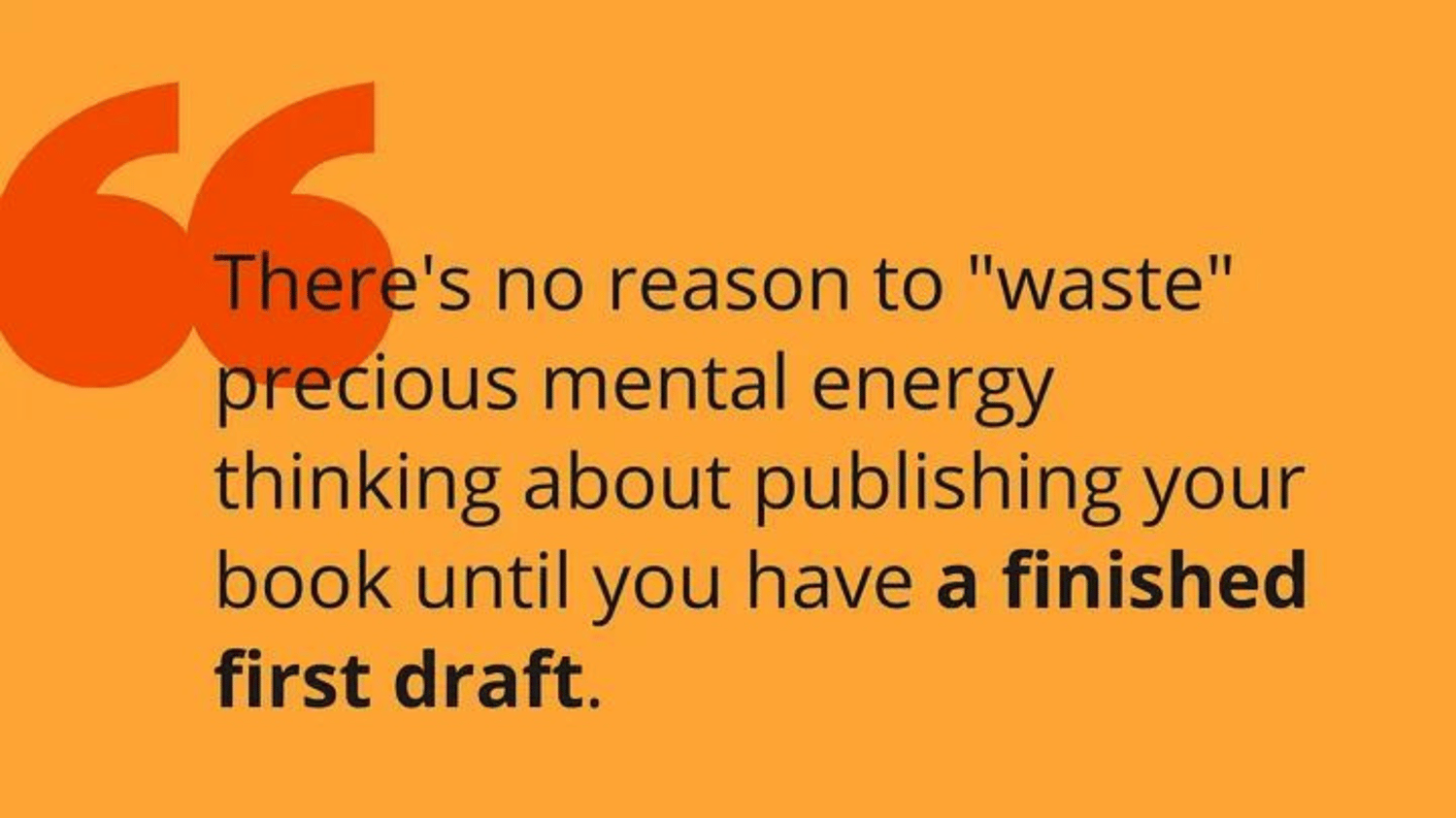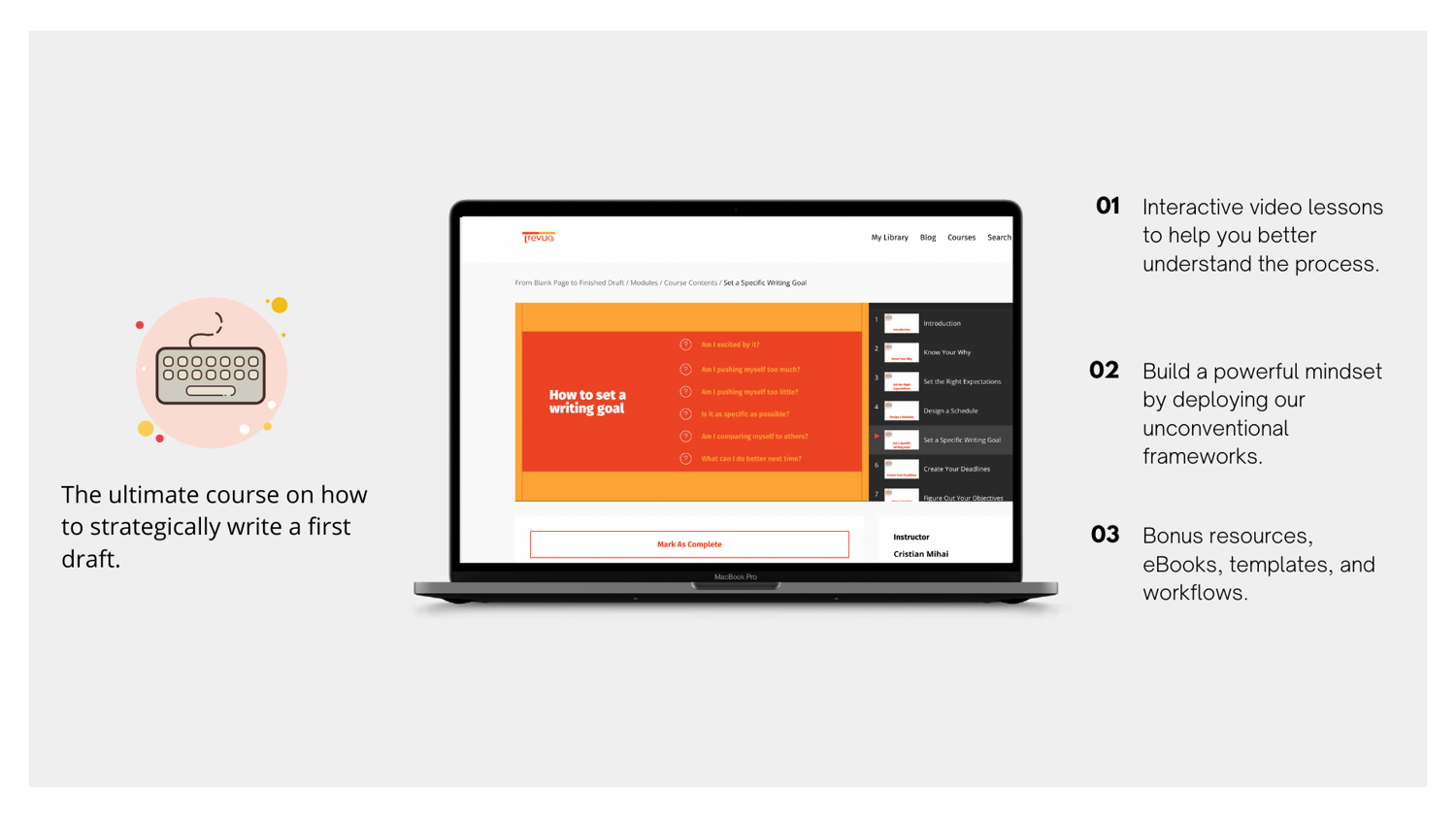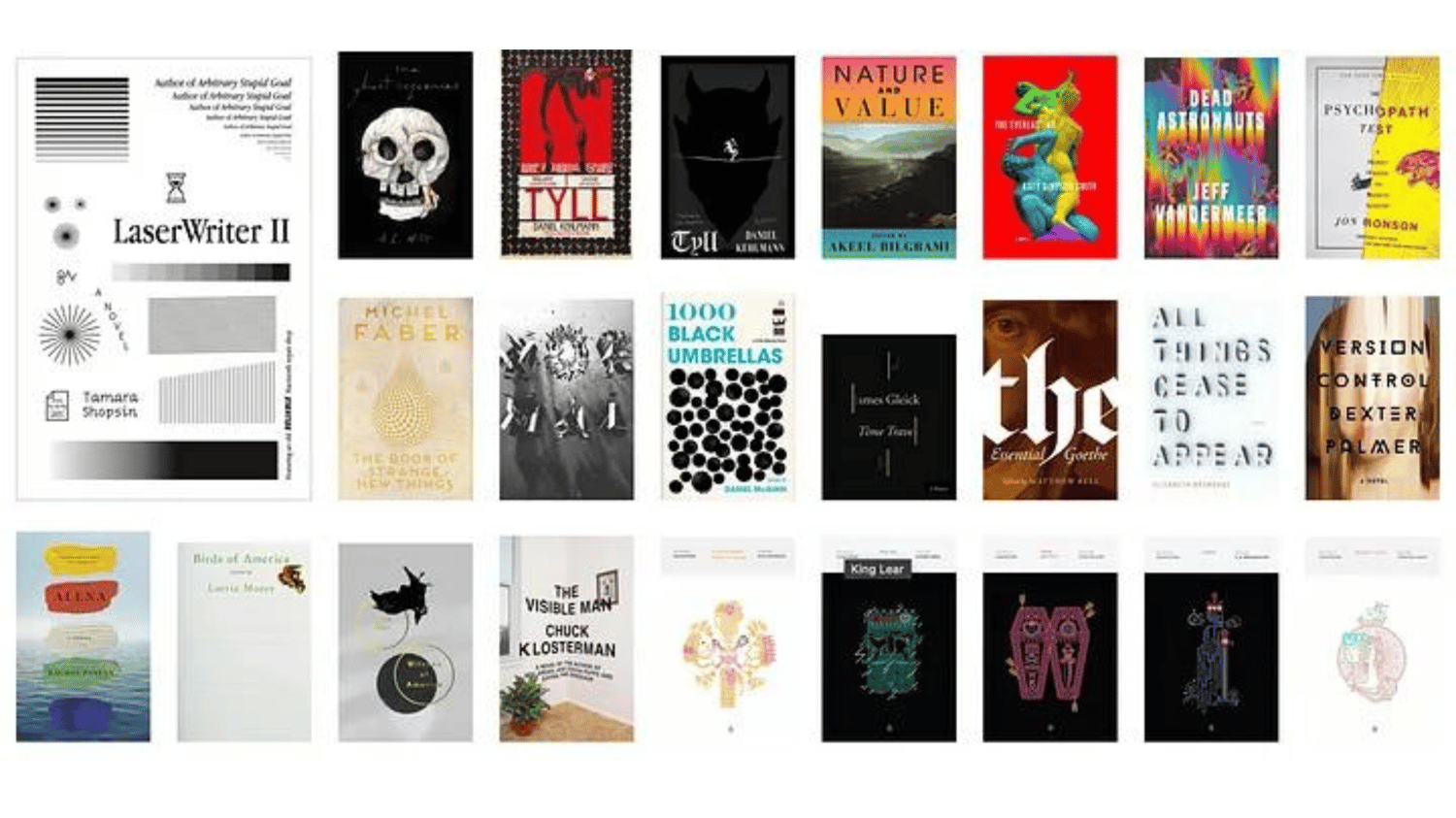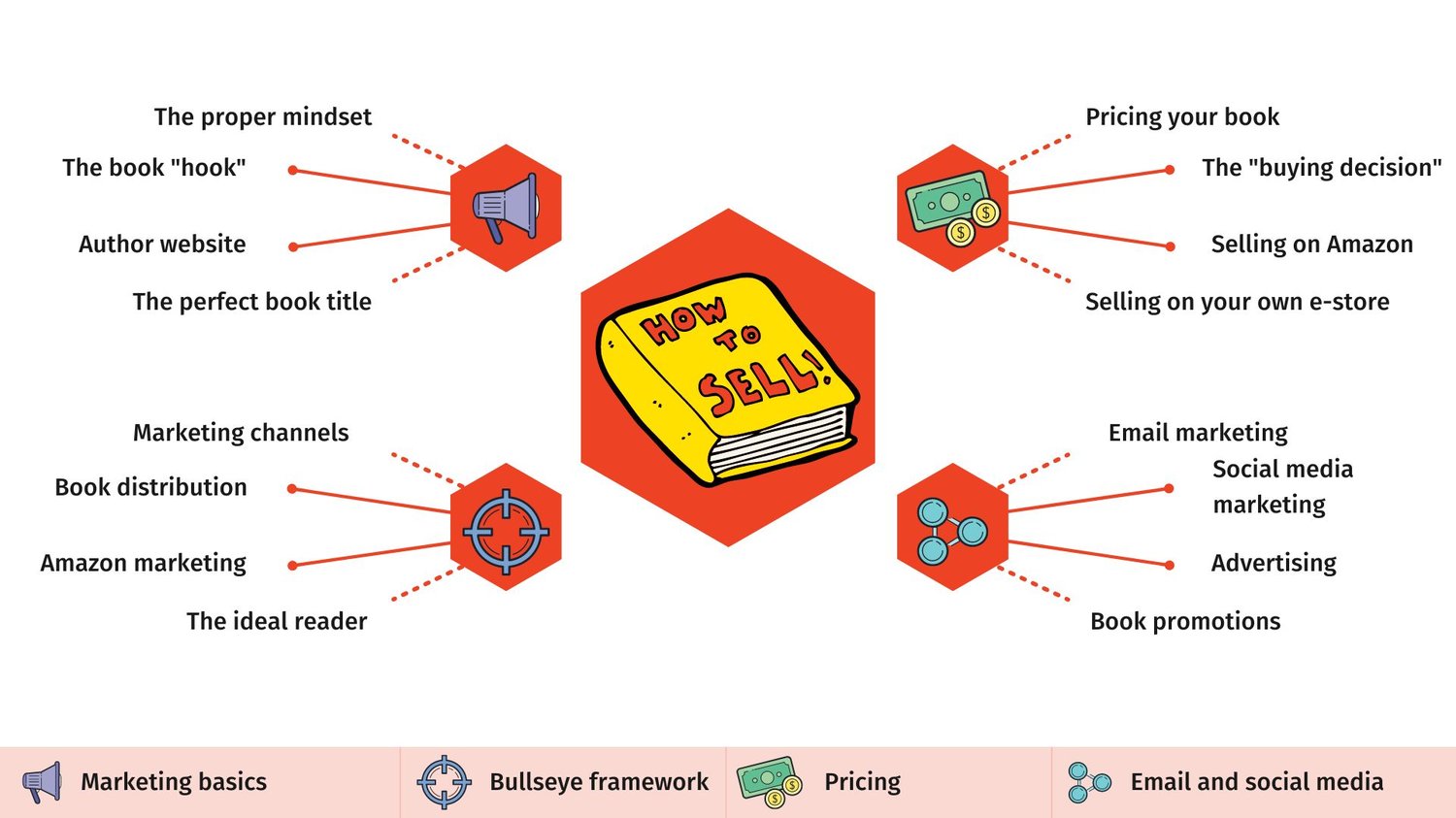Writing a book is hard work. Getting it published can be even harder. Especially if you want to publish it yourself.
Self-publishing means you control everything. You pick the title, the cover, the price. You decide when and how to sell it. This freedom is great. But self-publishing is also more work.
You become the publisher. So you have to handle editing, design, marketing. Learn how to sell online and in bookstores. Understand copyright laws. Stuff big publishers usually take care of.
It's a tough road but can be rewarding. When you sell your first copy, see a review online, you'll know your hard work paid off. Your story is out there for readers to enjoy.
If you’re a novice in the world of indie publishing, consider this your ultimate guide.
1. Write Your Book
One of the most important steps in the process of publishing a book is (actually) writing it. Even though this may seem like an obvious step, it is one that should not be overlooked.
In fact, it is crucial that you take the time to carefully craft your book to ensure that it is the best it can be. This way, you can be sure that your book will be well-received by your readers once it is published.

Spend time researching your topic, gather your thoughts, and start writing.
Don’t worry if your first draft isn’t perfect. It’s okay to make mistakes and revise your work. Remember, the goal is to create a book that you’re proud of and that others will enjoy reading.
Writing a book can be a daunting task, but there are a few tips and tricks that can help make the process a bit easier:
- Set aside time to write every day. Even if it’s just for 30 minutes, creating a writing routine can help you make progress on your book.
- Create an outline. This will help you organize your thoughts and ensure that your book has a clear structure.
- Write the first draft quickly. Don’t worry about making it perfect, just focus on getting your ideas down on paper.
- Take breaks. It’s important to step away from your book every now and then to clear your mind and prevent burnout.
- Get feedback. Once you’ve finished your first draft, ask friends, family, or writing groups for feedback. This can help you identify areas that need improvement and make your book stronger.
Write a book your target audience wants to read
As you write your book, it’s important to consider your target audience. What kind of readers do you want to attract? What topics are they interested in? By understanding your target audience, you can tailor your book to their interests and make it more likely that they will want to read it. Spend time researching your audience, reading reviews of similar books, and getting feedback from beta readers to ensure that your book is appealing to your target audience.

Interested in learning more about turning a blank page into a stunning work of art? Our course, The Write Way: A Course on the Process of Turning a Blank Page into a Finished Draft, offers you a plethora of strategic ways to turn a blank page into a finished draft.
2. Edit and Proofread
After writing your book, it’s crucial to edit and proofread it to ensure it’s polished and error-free.
To make the editing process easier, consider taking at least a couple of weeks off between finishing your first draft and the editing process. This way, you’ll come back to your work with fresh eyes and a clearer perspective.
When proofreading your book, pay attention to grammar, spelling, and punctuation. It’s also important to check for consistency in style, tone, and formatting. If you’re not confident in your abilities, consider hiring a professional editor. A second set of eyes can help catch errors that you might have overlooked.
Pro-tip: You can use an AI tool like Grammarly or ProWritingAid to assist you. While they are far from perfect, they can be of real help, especially when working with large manuscripts.
Remember, the goal of editing and proofreading is to make your book the best it can be. Take the time to do it right, and you’ll be rewarded with a polished and professional final product.
Hire a professional editor
A professional editor can help catch errors and inconsistencies in your book that you might have missed, and can provide valuable feedback on how to improve your writing. When hiring an editor, consider the following:
- Look for an editor who specializes in your genre. Different genres have different conventions and expectations, so it’s important to find an editor who understands the unique aspects of your book.
- Research potential editors thoroughly. Check their credentials, read reviews from previous clients, and ask for samples of their work.
- Consider the editor’s experience. An editor who has worked with many authors and has a proven track record of success is likely to be a good choice.
- Be clear about your expectations. Let the editor know what you’re looking for in terms of feedback and revisions.
- Be willing to receive feedback. Remember, the goal of working with an editor is to improve your book. Be open to constructive criticism and willing to make changes to improve your work.
- Agree on a timeline and budget upfront. Make sure you’re both on the same page about when the work will be completed and how much it will cost.
- Communicate clearly and respectfully. Remember, your editor is a professional who is there to help you. Treat them with respect and communicate clearly and kindly to ensure a positive working relationship.
3. Design Your Book Cover

Whether you like it or not, the truth is that everyone judges a book by its cover, so it’s important to make sure that your cover is not only visually appealing but also conveys what your book is about.
One option is to hire a professional designer to create your book cover. They have the skills and experience to create a cover that captures the essence of your book and appeals to your target audience.
Here are some tips on how to work with a designer on a book cover:
- Clearly communicate your vision for the cover. Provide examples of covers you like and explain what you want your cover to convey.
- Be open to the designer’s suggestions. They have experience in creating book covers and may have ideas that you haven’t considered.
- Provide feedback on the designer’s initial concepts. Let them know what you like and don’t like, and work together to refine the design.
- Be clear and specific with your requests. If you want changes made to the design, provide clear instructions on what you want changed.
- Be respectful of the designer’s time and expertise. Don’t expect them to make endless revisions or work for free.
Alternatively, you can design your own cover using online tools like Canva. This can be a cost-effective option, but it may require more time and effort on your part to create a professional-looking cover.
Here are some tips on how to design a book cover:
- Make sure it’s visually appealing and eye-catching
- Convey the message of your book through the cover
- Consider your target audience and design the cover accordingly
- Use high-quality images and fonts
- Keep the design simple and uncluttered
- Make sure the title and author name are easy to read, even in thumbnail size
- Consider using a professional designer or online tools like Canva for help with the design
Remember, your book cover is an important part of your book’s success. Take the time to carefully consider your options and create a cover that will make a great first impression on potential readers.
4. Format Your Book
Formatting your book is an essential step in the publishing process that should not be overlooked. While it can be a daunting task, there are many tools available to help make it easier. In addition to software like Scrivener or Vellum, you can also find many online resources that offer tips and tricks for formatting your book to industry standards.
One important consideration when formatting your book is ensuring that it is readable on a variety of devices. This means that you may need to adjust the font size and spacing to make it easy to read on both small and large screens. It’s also important to consider the margins and page layout to ensure that your book looks professional and polished.
Another aspect of formatting your book is adding elements like chapter headings, page numbers, and a table of contents. These elements help guide readers through your book and make it easy to navigate. You may also want to consider adding images, graphs, or other visual elements to enhance your book’s overall design.
While you can certainly format your book yourself, it can be a time-consuming and challenging process. If you’re not confident in your formatting skills, it may be worth considering hiring a professional formatter to ensure that your book looks its best. A professional formatter can also help ensure that your book meets industry standards and is ready for publication.
Here are some quick tips for formatting and interior design for your book or eBook:
- Use a clear, easy-to-read font
- Keep your paragraphs short and well-spaced to make your book easier to read
- Use headers and subheaders to break up your text and make it more organized
- Include page numbers and a table of contents to help readers navigate your book
- Consider adding images or other visual elements to break up the text and make your book more visually appealing
- Use a consistent style throughout your book, including font size, spacing, and indentation
- Consider the size and orientation of your book when formatting to ensure that it looks good on a variety of devices
5. Choose a Publishing Platform
There are a variety of factors you should consider when choosing a publishing platform. First, you should think about the type of book you’re publishing and what kind of audience you’re targeting. Some platforms may be better suited for certain genres or demographics than others.
Additionally, you may want to consider the level of control you have over the publishing process. Some platforms, like Amazon’s Kindle Direct Publishing, allow you to have complete control over the pricing, formatting, and distribution of your book. Others may have stricter guidelines and limitations.
It’s also important to think about the potential reach of each platform. While Amazon’s Kindle Direct Publishing is one of the most popular platforms, there may be other platforms that have a more targeted audience or a better reputation within certain circles.
Ultimately, the key is to do your research and choose the platform that’s best for you and your book. Take the time to weigh the pros and cons of each platform and make an informed decision. And remember, you can always switch to a different platform in the future if your needs or goals change.
Here is a list of popular self-publishing platforms, along with a brief definition and some pros and cons:
- Amazon Kindle Direct Publishing (KDP): Amazon’s self-publishing platform that allows you to publish your book as an eBook and/or paperback. Pros: Large potential audience, easy to use, good royalty rates. Cons: Can be difficult to stand out among the competition, limited formatting options.
- IngramSpark: A self-publishing platform that allows you to publish both eBooks and print books. Pros: Wide distribution, the ability to print and distribute hardcover books, good royalties. Cons: Can be more expensive than other platforms, limited marketing support.
- Draft2Digital: A self-publishing platform that distributes eBooks to a variety of retailers, including Amazon, Apple iBooks, and Barnes & Noble. Pros: Easy to use, wide distribution, good royalties. Cons: Limited formatting options, limited print distribution.
- Smashwords: A self-publishing platform that distributes eBooks to a variety of retailers, including Amazon, Apple iBooks, and Barnes & Noble. Pros: Wide distribution, good royalties. Cons: Limited formatting options, limited print distribution.
- Kobo Writing Life: A self-publishing platform that allows you to publish both eBooks and print books. Pros: Wide distribution, good royalties. Cons: Smaller potential audience, limited marketing support.
Note that this is not an exhaustive list, and there may be other self-publishing platforms that are better suited to your needs. It’s important to do your research and choose the platform that’s best for you and your book.
6. Upload Your Book
Once you’ve chosen your publishing platform and have prepared your book for publication, it’s time to upload it. This step is very important because it will determine the format of your book and how it will be presented to readers.
Before uploading, ensure that your book is in the correct format and is free from errors. This means that you should proofread your book and have it edited by a professional editor if necessary.
After you’ve done this, follow the platform’s instructions carefully to ensure that your book is uploaded successfully. This might include filling out details such as the book’s title, author, description, and cover art.
Once your book is uploaded, it will usually go through a review process to ensure that it meets the platform’s standards. This process can take a few days or even weeks, so be patient. In the meantime, you can start promoting your book on social media and other channels to build anticipation for its release.
7. Market Your Book
The final step is to market your book. This is where you’ll need to get creative and come up with a marketing plan that works for you. Consider using social media, book bloggers, and book clubs to get the word out about your book.
Here are five ways to market a self-published book:
- Utilize social media: Social media is a great way to connect with potential readers and promote your book. Consider creating a Facebook page, Twitter account, or Instagram profile for your book. Share updates about your book’s progress, post teasers and excerpts, and engage with your followers to build excitement for your book’s release.
- Reach out to book bloggers: Book bloggers are always looking for new books to review and share with their followers. Research book bloggers who focus on your genre and reach out to them to see if they would be interested in reviewing your book. Be sure to provide a free copy of your book and a professional press kit.
- Join online book clubs: Online book clubs are a great way to connect with readers who are interested in your genre. Join book clubs on Goodreads, Facebook, or other social media platforms and participate in discussions. Share information about your book and engage with members to build interest.
- Offer giveaways and promotions: Consider offering a giveaway or promotion to build excitement for your book’s release. This could include offering a free ebook to the first 100 people who sign up for your newsletter or running a contest on social media.
- Attend book events and signings: Book events and signings are a great way to connect with readers and promote your book. Research local bookstores and libraries in your area and reach out to them to see if they would be interested in hosting an event. Be sure to bring copies of your book, business cards, and other promotional materials.

Did you know that only 2.8% of self-published authors earn more than $10,000 from their books?
Our course on marketing a self-published book is designed to help you beat the odds...
The road to self-publishing may be long, but take it step-by-step and before you know it, you'll be holding your published book in your hands. Your name on the cover, pages filled with your words.
It'll be a moment you'll never forget. A milestone to be proud of. Proof that your story made it out into the world.
Of course, the journey doesn't end there. Next comes enticing readers, planning signings, refreshing rankings. But you'll handle it all with aplomb, armed with the skills this guide has provided.
When doubt creeps in, remember why you started writing in the first place. Revisit what drove you to share your story. Let your passion reignite when obstacles arise.
You have a book within you, just itching to get out. So keep following this map, no matter the twists and turns. Let it lead you to accomplish something few dare to try.
The author's journey awaits. Stories to write, worlds to build, characters waiting to be born. Brave the unknown and make them all come alive.
Step by step, word by word. That's how books are written and dreams are achieved.



Comments ()